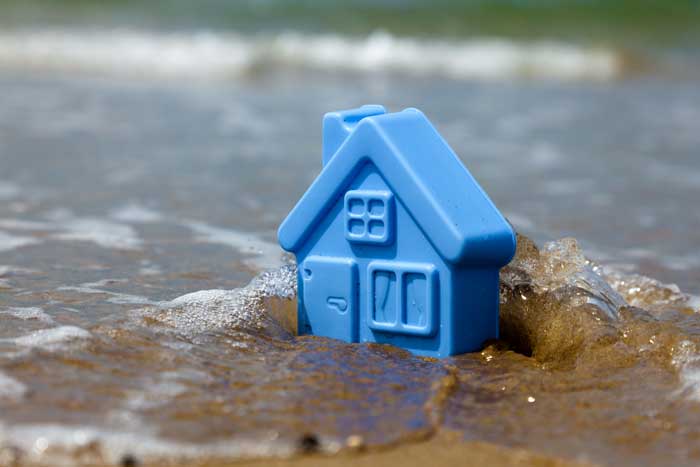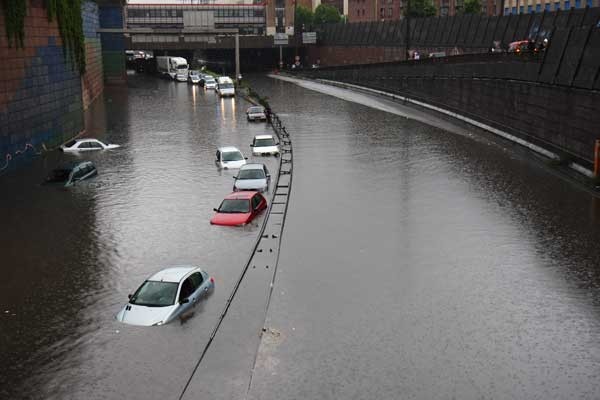Blog
Seasonal Risk Management: Winter Is Coming
Your property and your vehicle are especially vulnerable to damage during the winter season. As we transition from fall to winter, now is the best time to prepare, before the rain, first frost, and snow make any outdoor activity more challenging.

Being proactive about weather and your home is a must for many reasons. In 2015, winter storms caused about $3.5 billion in insured losses. Needless to say, preventing winter damage is preferable to dealing with the financial aftermath of claims.
Preparing Your Property Can Save You Money
Beyond saving the headache in the middle of a snow or rainstorm, proactive prep can save you money now and in the long run:
- Lower your energy bills: When you insulate your home correctly in all the right places, you can save on the costs of energy.
- Increase the lifespan of your home: As things deteriorate over time, doing the required yearly maintenance can prevent damage and save on big costs in the future.
- Avoid costly repairs and insurance claims: What people often don’t factor in is the cost of repairs when there’s an insurance claim—costs that you will have to pick up (like your deductible).
- Avoid the inconvenience of repairs: What’s your time worth? When homes suffer from winter damage, the inconvenience of filing a claim and possibly having to move out for a period of time during repairs is not ideal.
Winter Season Property Checklist
The list of home winterizing to-dos might seem overwhelming, and even more so if you have more than one property. However, if you split the work into different areas of your property, and tackle it over the course of a month or two (rather than one frazzled weekend), it will seem far more doable.
Let’s start with the exterior, working from the top down (depending on if the house is lived in or vacant, you would pick and choose from the lists):
- Roof: Replace damaged or missing shingles, and use roofing cement to seal joints of deteriorated flashing around chimneys, walls, skylights and vents.
- Gutters: Clean out debris, ensure downspouts empty five feet or more from the house and re-secure any weak spots in the system (a grade of dirt that slopes away from the house around the foundation can help gutter effectiveness as well).
- Lighting: Ensure the electrical work and bulbs are good to illuminate icy walkways so you can avoid personal injury as well.
- Plumbing: Drain water from pipes, valves and sprinkler heads. Shut off faucets and wrap them. Remove and store hoses.
- Drains/vents: Clear away any debris and cover openings where birds, mice, etc. may try to nestle.
- Deck: Treat wood for decay, splintering or bugs, clean debris from between the boards, ensure handrails are secured and clean, and cover/store outdoor furniture.
- Lawn/garden: Trim overgrown branches away from houses and wires, empty planters of soil and bring any fragile materials indoors, dig up and store bulbs and aerate, reseed, and fertilize the lawn (with winterizer).
Windows and doors:
- Check weather stripping and repair as needed.
- Look for decay or rot in wooden frames and fix.
- Caulk any drafts.
- Replace screens with storm doors and windows.
- Inspect glass for cracks or sealant gaps and repair.
Moving into the house itself, think about air movement and efficiency:
- Fireplace: Clean away soot, look for cracks and check for drafts and damaged dampers.
- Air quality: Replace air filter, clean humidifier and replace evaporator pad, and ensure smoke and carbon monoxide detectors work.
- Heating/cooling: Bleed hot-water radiator valves, update to a programmable thermostat, take air conditioners out of windows and insulate behind exterior-wall outlets and switch plates with foam-insulating sheets. Switch ceiling fans so blades push warm air down and seal gaps in attics, crawlspaces, and basements.
- Furnace: Your furnace should be cleaned and checked for safety and efficiency.
- Water: Flush the hot water heater to remove sediment and make certain the pressure relief valve is working. Consider wrapping the hot water heater and pipes with insulators. In a property that will be unattended, you may want to drain the water system.
Seasonal tools and appliances need attention as well:
- Spray seasonal tools with light oil to keep rust at bay.
- Clean dirt, leaves, etc., from the lawn mower.
- Place snow blower, shovels and the ice chipper in easy-access spots and make sure all are in working order.
- Stock up on ice melt and sand for steps and walkways.
Don’t Forget About Your Vehicles
Reduce the risk of a breakdown on winter roads by getting a complete tune-up and any routine maintenance. Pay special attention to:
- The battery, which takes more power in cold weather
- The cooling system for proper amounts of fresh coolant
- Windshield washer fluid, wipers and defroster for levels and efficiency
- Tires for pressure, tread and general aging
- Locks, which can freeze up; keep lubricant and antifreeze products on hand
If you have a car that won’t be driven over the winter, keep it indoors or at least under a weatherproof cover.
Get it washed to preserve the finish, change the oil, inflate the tires to appropriate levels, top off the tank and run it every couple of weeks to keep the battery charged. Stop the tires with chocks instead of the parking brake, as the brake pads and rotors can fuse when in contact for too long.
Safety Precautions
Just in case you and your family are stranded in the house during or after a winter storm, keep some basic necessities on hand:
- Food/water: Stock ready-to-eat canned goods, energy bars and other non-perishables, several gallons of water, manual can opener and paper or plastic dishes, cups, and utensils (don't forget food for the pets!).
- Battery power: Be able to see and communicate with battery-powered flashlights, radio, clock, cell phone, and extra batteries.
- Health: Keep a first aid kit, supply of prescription medications, blankets, pillows, and warm clothing on hand at all times.
- Auto: Have water, a few food items, flashlight, blankets, and a first aid kit ready in addition to things like jumper cables and a jack.
You can never be too prepared for winter, especially if you live in regions that experience extreme conditions. In general, as soon as summer ends, you should start looking at your winter checklist to ensure a safe and cozy season for you, your family, and your property.
Table of Contents








